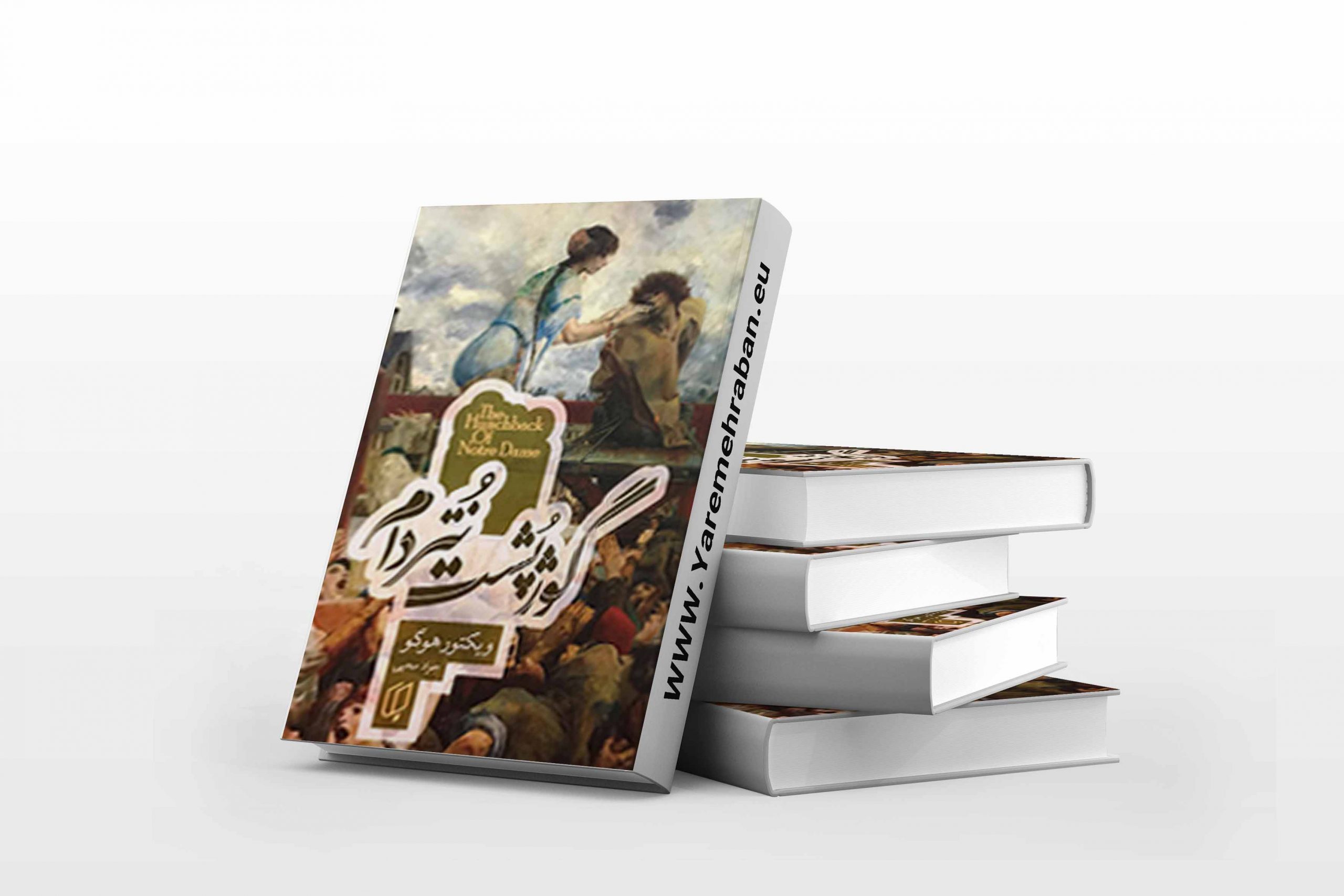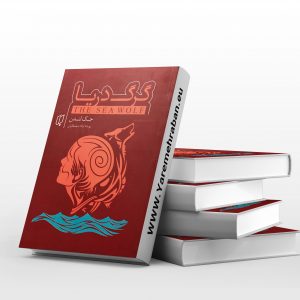Description
The Hunchback Of Notredame is one of Victor Hugo’s most iconic stories. Notre Dame’s humpback whale received a lot of attention after its release. Walt Disney Company made an animation based on it. The work has also been adapted into a feature film and several operas.
The story of The Hunchback Of Notredame is that, in 15th-century Paris, the chief of the city’s guards finds a malnourished baby, takes care of him, and keeps him in the Notre Dame church tower. This baby with a beautiful face is called Kazimudo. Kazimudo, who has a strong body, is responsible for playing the church bells. Twenty years later, while Paris is celebrating, Casimudo sees Esmeralda, a gypsy girl performing in the streets, and this is where the story begins …
In The Hedgehog of Notre Dame, you see various examples of life: the deviation and fall of a priest, the debauchery of a student, the debauchery of an officer, the intense love of a gypsy girl, the sacrifice and devotion of a monster and the emptiness of a monster. You will know the people of Paris from the vagabonds and the gypsies and thieves to Louis XI.
Victor Hugo works miracles in this book, and with the skill and mastery that characterizes his writing, the humanity and devotion of a man who is driven from everywhere and has no refuge and is despised by all because of his ugliness, is so good. And masterfully paints and embodies that no better is possible. This humpback monster, which can be seen almost everywhere in the book and is in fact the protagonist, in the face of goodness and kindness and expression of loyalty to his liberator, throws himself into any fire and water and goes to the point of sacrifice.
In this sad and instructive book, and in this great historical and romantic masterpiece, Hugo exposes the bitter truths of life and the corruptions and flaws of the ignorance of a society far from civilization, and disciplines him with whips that are both instructive and benevolent. He has compassionately shown the way of life.

In a part of Notre Dame’s Hedgehog, we read:
Wow … the second time I saw you, I fainted and lost consciousness. I went crazy and confused. I no longer wanted to be away from you for a moment, I did not know where to go and how to catch you. I saw a rope tied to my broken wings and the other end of it was on the devil’s leg and he was dragging me after him. I was looking for you in the streets and bazaars, even though I was displaced, and at the end of the day, when I returned to my room, I saw that my love and affection had increased thousands of times from the beginning. I knew you were a gypsy girl and a witch. I wanted to take you to court and get rid of you. I ordered them not to let you fight in Garou Square anymore, by which I imagined that I would be able to forget, but you did not heed my order and you appeared in the square again.
Victor Marie Hugo (1802 – May 22, 1885) was a French Romantic poet, novelist, and playwright. He is world-renowned as one of the best French writers. His works refer to many popular political and artistic ideas of his time and reflect the contemporary history of France.
His most notable works include The Poor, The Hedgehog of Notre Dame, and The Man Who Laughs. Hugo writes in the introduction to Notre Dame’s Humpback Whale: “A few years ago, the author of this book, while watching or, to put it another way, exploring Notre Dame Church in one of the dark corners of the towers, saw the word ANATKH dug deep into one of the walls.” … “The person who had written this word on the wall of the church tower of Notre Dame disappeared from the world several centuries ago and his writing disappeared after him. The end of the life of the church is very close. “It has come.”
Summary of the story of Notre Dame
The story of Notre Dame’s Hedgehog is told by several different characters, including Esmeralda, Kazimudo and Claude Ferrell. These characters, who with the author’s heavy exaggerations and descriptions reflect the medieval historical atmosphere of Paris, are involved in love, betrayal and execution. In fifteenth-century Paris, Kazimodo, a handsome boy, lives in the Notre Dame Cathedral. Claude Ferrero-Waldner, the city’s chief of staff, takes care of the little boy when he is young. Kazimudo is known throughout the story of the notorious humpback whale as the naughty and ugly bell ringer, and falls in love with a girl named Esmeralda who dances and performs with the goat.
About the book The Hedgehog of Notre Dame by Victor Hugo
The Hedgehog of Notre Dame by Victor Hugo was published in 1831. This timeless work of French literature, originally written in Notre-Dame de Paris, is about French society in the Middle Ages, and Victor Hugo conveys a sense of romance to the reader through a compelling and popular story. The atmosphere and characters of the story are mixed with exaggeration and are created in astonishing realism. The scenes created in this story always excite and fascinate the readers of the work, and in this way, the author depicts many of the common political and artistic ideas of that time.
Victor Hugo has been able to provide unique descriptions and descriptions with his pen, which has made this work one of the most fascinating and astonishing international works after about two hundred years. The presence of a character with a different and strange appearance is a reflection of the sometimes exaggerated pen of Hugo that we encounter in this story.
One of the highlights of this story is the prominent role of the Notre Dame de Paris. This story takes place in this historical place and the author depicts the sense of architectural beauty in the world of literature. The Notre Dame de Paris is a symbol of Gothic architecture; In this style of architecture, which is related to certain historical periods in which people have served the church. In fact, this style of architecture is a symbol of a religion that has dominated the people. In this story, Victor Hugo shows the culmination of the fusion of architecture and literature when Claude Ferrell falls from this church. The author perpetuates the place of this architectural work in literature by his powerful description of the church and the depiction of windows decorated with stained glass and intricate columns.
In a part of the book The Hunchback Of Notredame, we read the work of Victor Hugo
The bishop, Claude Ferrell, was born and raised in a respected family. Ever since he was little, he wanted to be a priest. He learned Latin as a child and was always studying and persevering in his studies.
Unfortunately, his parents died during the Great Plague of 1466. Claude became the head of the family and took care of his younger brother, Jean. Doing these two things, studying and taking care of my brother, was hard work for Claude Ferlow. But he did. Jean was twenty years old when Claude Ferrolo became pastor of Notre Dame Church.
Despite Claude Ferrero-Waldner’s instructions, Jean grew wild like a tree. The more stupid Jean’s behavior became, the more and more seriously Claude Ferrero studied and studied. The more he studied, the more he became interested in chemistry, astronomy, and astrology.
It was soon rumored that Claude Ferrell had built a secret room in the church. People said that he practiced magic behind closed doors. One day two women called him to the church benches. The two widows had found small children left in a wooden basket next to a statue of St. Christopher. The child was wrapped in a canvas cloth with only his head out. He had thick red hair and crooked teeth and had only one eye.
When Claude Ferlow heard the baby crying, he knew you had to take care of him. Just as he had taken care of little Jean. So Claude Ferlow said to the widows, “I will adopt this poor child.”
Ferrolo hugged the baby and wrapped himself in his robe and left. He baptized his son and named him Kazimudo. The two were happy together.
When the boy was fourteen, Claude Ferrero-Waldner charged him with playing the bell of Notre Dame, and the church became the world of Kazimudo. When he was little, most people saw him going up and down the stairs.
A cinematic adaptation of the story of the notorious humpback whale
The book, also known as Notre Dame de Paris, also known as Notre Dame in Paris, has also attracted the attention of filmmakers. Based on this story, the Walt Disney Company made an animation and the French director Jean Dolanova made the 1956 film The Hedgehog of Notre Dame. The film was the first color adaptation of Victor Hugo’s work.
About Victor Hugo
Victor Marie Hugo, the pioneer of Romanticism in French literature, was born in 1802. He started writing as a child and resumed composing poetry. During his lifetime he wrote numerous works in the fields of novelism, poetry, historiography and playwriting and became known as one of the most prominent French writers. In addition to writing literary works, Victor Hugo also worked for some time as a political activist, and for this reason he was able to portray the cultural and social atmosphere of nineteenth-century France well in his works. At that time, “Napoleon Bonaparte” ruled France, which was initially supported by Victor Hugo, but after the rise of “Napoleon Bonaparte” and the establishment of dictatorial laws, he called him a traitor.
In 1837 he published Cromwell with a detailed introduction to the school of Romanticism, which made the style known independently. This author immortalized his name by writing the cultured work “The Poor” and after losing his family in Word
He died in May 1855 in France.
Translation of the book The Hunchback Of Notredame into Persian
The book The Humpback Whale of Notre Dame caught the attention of critics and readers after its publication and was translated into various languages. Various translators in Iran have translated this work into Persian and put it on the market. Mohammad Qesa translated the book The Hedgehog of Notre Dame by Victor Hugo, rewritten by Diana McFadden, and published it by Shahr Ghalam Publications in 2015. This book is part of the collection “Conversation with the most famous stories in the world” prepared by Shahr Ghalam Publications for teenagers, which includes the works of the greats of world literature.
Mohammad Qesa is an Iranian translator who has been working in the field of translating international works since 1988. His other works include “White Teeth by Jack London” with a rewrite by “Kathleen Ulm Stead”, “Treasure Island by Robert Lewis” with He noted the rewriting of “Chris Tate” and “Gulliver’s Travels by Jonathan Swift” with the rewriting of “Martin Woodside”.
Older translations of Notre Dame’s The Hedgehog include the version of Esfandiar Kavian, published by Jami Publications and Ein Elahi Publications. Also, this work was translated by Javad Mohi and published by Par Publications in 2016.
1- Introducing the book The Hunchback Of Notredame on YouTube
2- Introducing the book The Hunchback Of Notredame in Aparat














Reviews
There are no reviews yet.